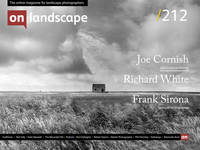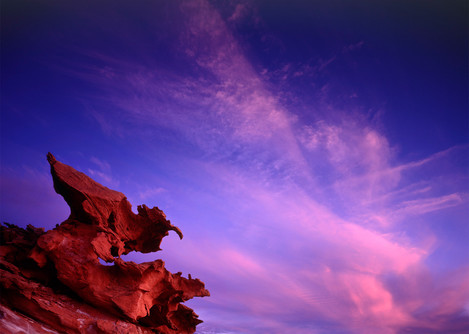Featured Photographer

Frank Sirona
Frank Sirona is a German large format landscape photographer, known for his images of the American Southwest which so far have been exhibited in Germany, Switzerland, Austria and the US. In order to realize his vision of the perfect exhibition print he initiated and contributed to the development of a customised face mounting technology using anti-reflective mineral glass as carrier. Having received a training as a scientist, he is particularly interested in the natural phenomena which shaped our natural environment as we perceive it, and strives at combining the perspectives of science and art in what he calls the approach of the painter and the scientist.

Tim Parkin
Amateur Photographer who plays with big cameras and film when in between digital photographs.
I don't know why I haven't talked to Frank Sirona more often as we both share the same passions for large format landscape photography and both have a rather intense technical approach to getting the best results moderated (hopefully in my case) by a pragmatic attitude that realises it's the visual result that matters most. Whatever the reasons, it's been very nice chatting with a like minded individual and he has given me some well needed motivation to finally get my darkroom finished this year. Thank you Frank!
Can you tell me a little about your education, childhood passions, early exposure to photography etc.?
As a kid, I always loved to spend as much time as possible outdoors, and landscape photography is a fantastic excuse for continuing that. My interest in photography though was sparked by a cousin who had pioneered a new approach to simulating architecture photographs. He used modified endoscopes which had originally been designed for medical purposes for photographing architectural models, simulating the pedestrian´s view of buildings not existing yet. This all was done long before computer simulations came up, and back then revolutionised urban development because for the first time it was possible to view planned buildings not just from a bird´s eye view, but from street level.
But in the end, it was a book from the Time Life series on photography in my father´s library which became life changing for me. In that book, there were two Eliot Porter images taken down in Glen Canyon before its tragic flooding which just struck me like lightning. Never had I seen before such a beauty in a photograph, and I immediately knew that I just had to visit that land of the canyons myself - and bring a camera. From there it still took me many years until my first expedition to the Desert Southwest, and even longer until I started to fancy large format photography. In the meantime, I studied natural sciences, and at a glance, one might think that a scientific perspective distracts from an artistic point of view. To my own surprise, I realised that the contrary is the case: with a background in life sciences you inevitably have a different view on the natural world surrounding us, and this opens one´s eyes for structures and phenomena which one otherwise might have overlooked. Actually it turned out that this perspective is a steady source of inspiration, and it´s a perfect complement to a perspective primarily driven by aesthetics.
Is that the "Approach of the Painter and the Scientist" you´re alluding to in your Artist´s Statement? Could you explain this approach in a little more detail?
Exactly, that´s how I called this confluence of scientific and artistic perception.


